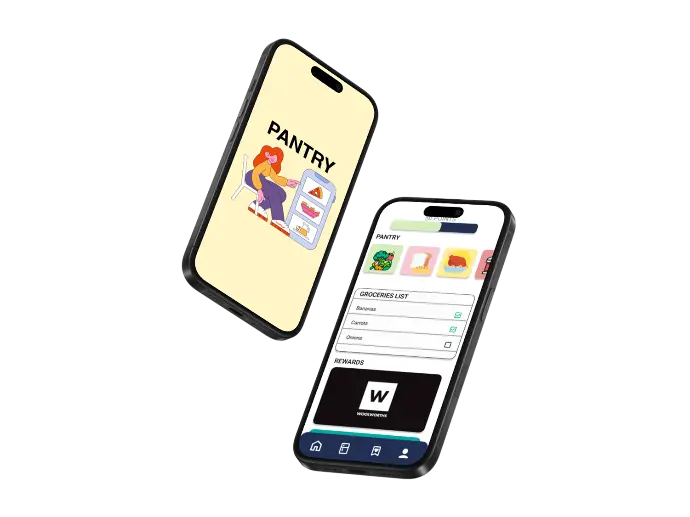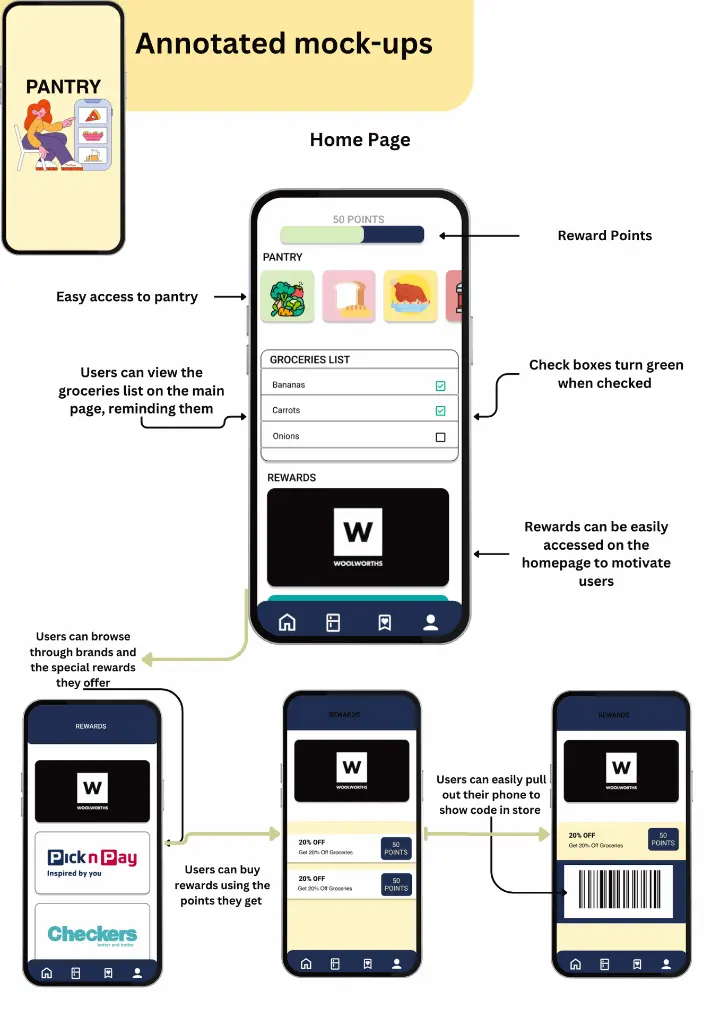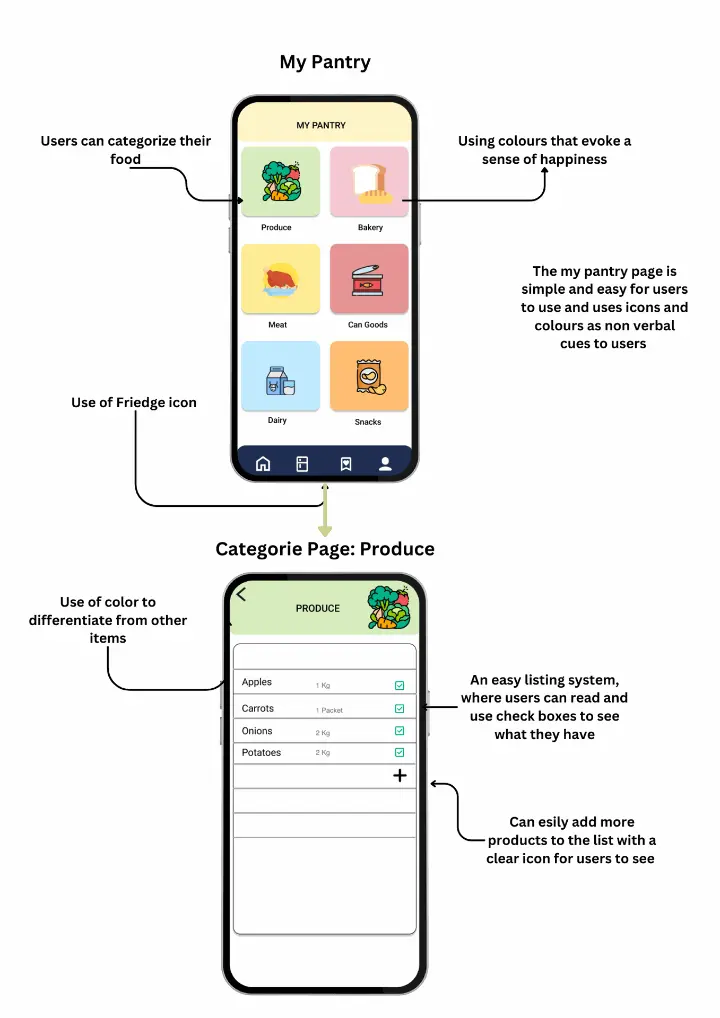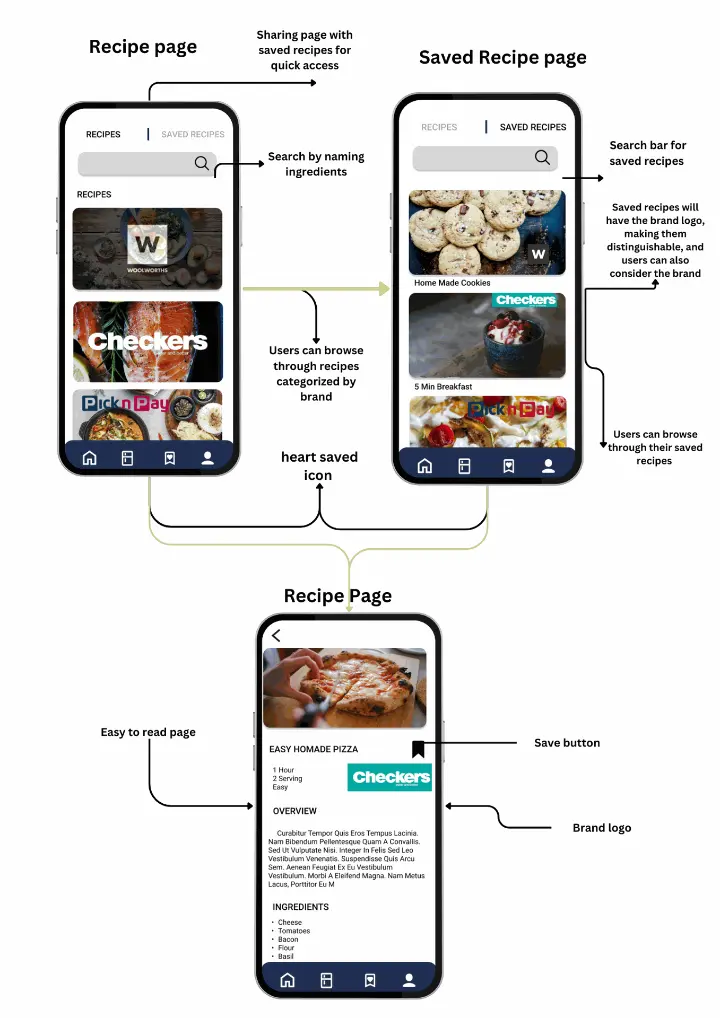Habit Mapping
For my first step of the brief, I brainstormed some of the behaviors about myself that I would like to improve. I used Miro’s sticky note feature and brainstormed some thoughts that came to mind.
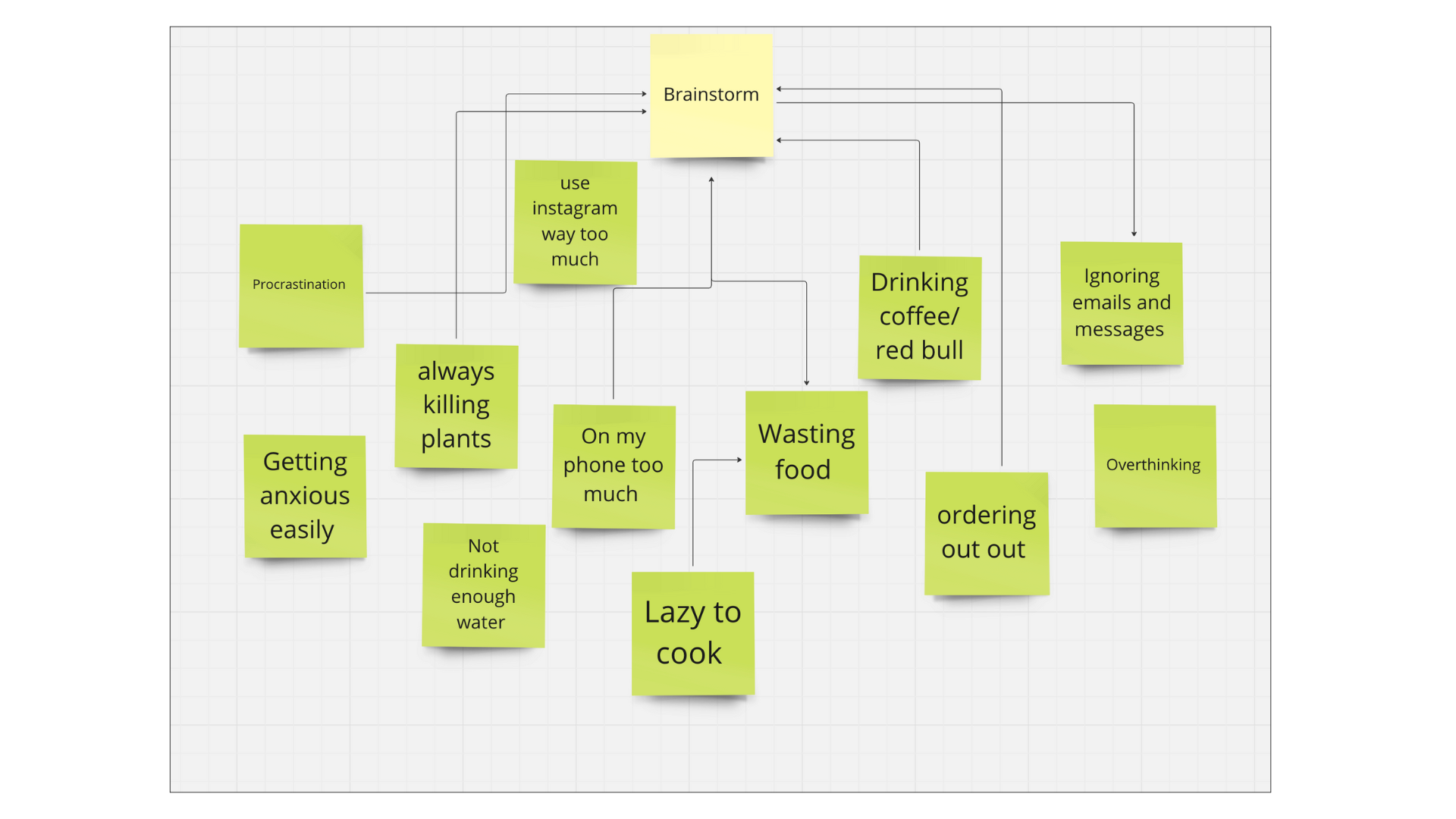
Mapping
I selected three of these habits that I felt strongly about and created a visual map of these different behaviors. This helped me better understand my bad habits, how they formed, and what was triggering them. By asking myself when they occurred, in what order, the triggers, and the results, I realized a lot about myself.
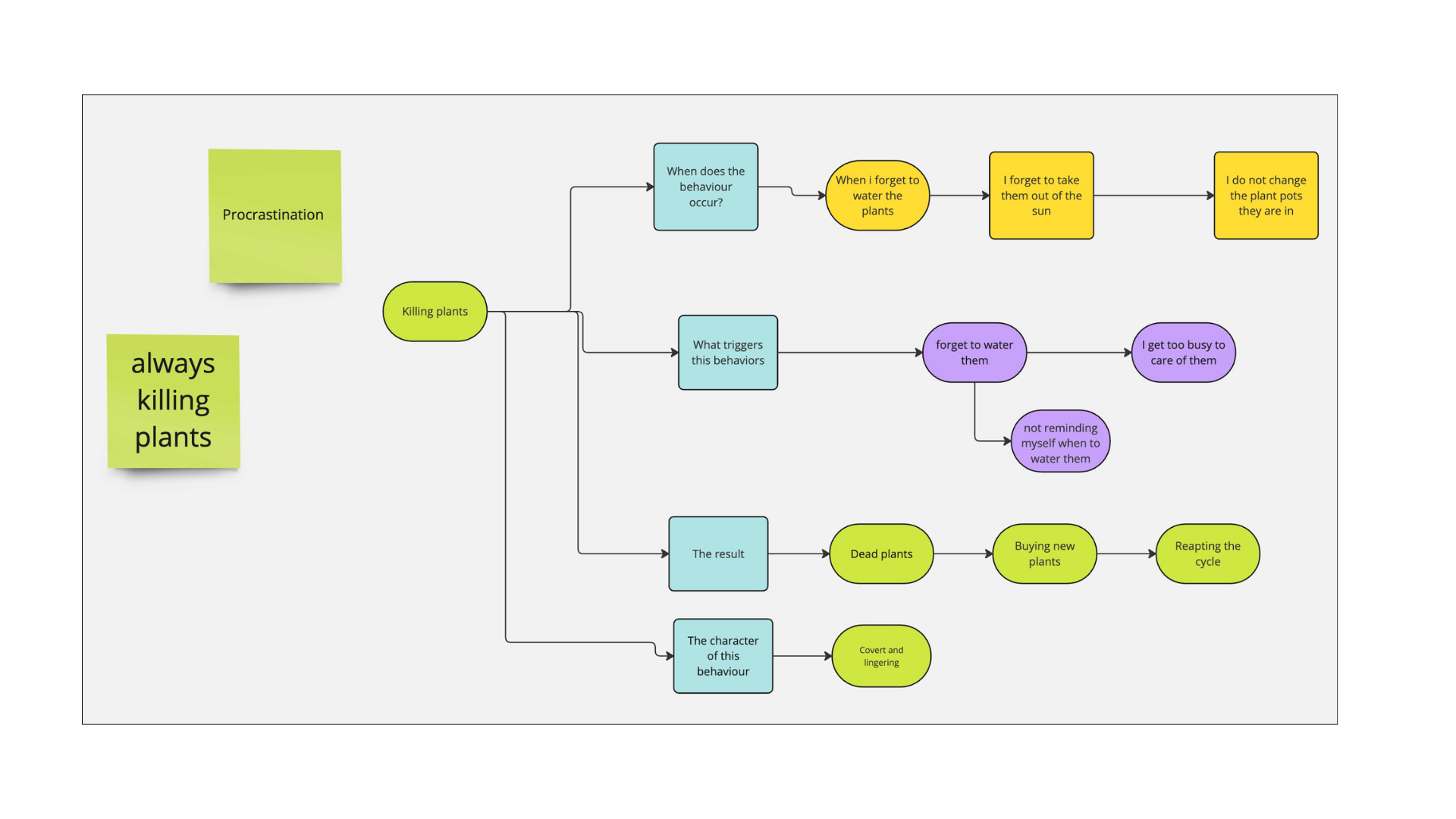
My next bad habits are mixed together as they relate to one another. Doing this made me see how my bad habit of wasting food and ordering out is linked to my procrastination. It made me realize that some changes can be made. I identified that I have a strange pattern in eating; I am often too tired to cook, which results in ordering out. However, when I am grocery shopping, I often buy food to cook but never know what to cook. I also do not shop with meal plans, such as recipes I want to execute, other than the standard recipes I make on a regular basis. Additionally, I get tired of eating the same things I cook, but I do not try new recipes. Therefore, I end up ordering out and forgetting I have ingredients to cook in my fridge.
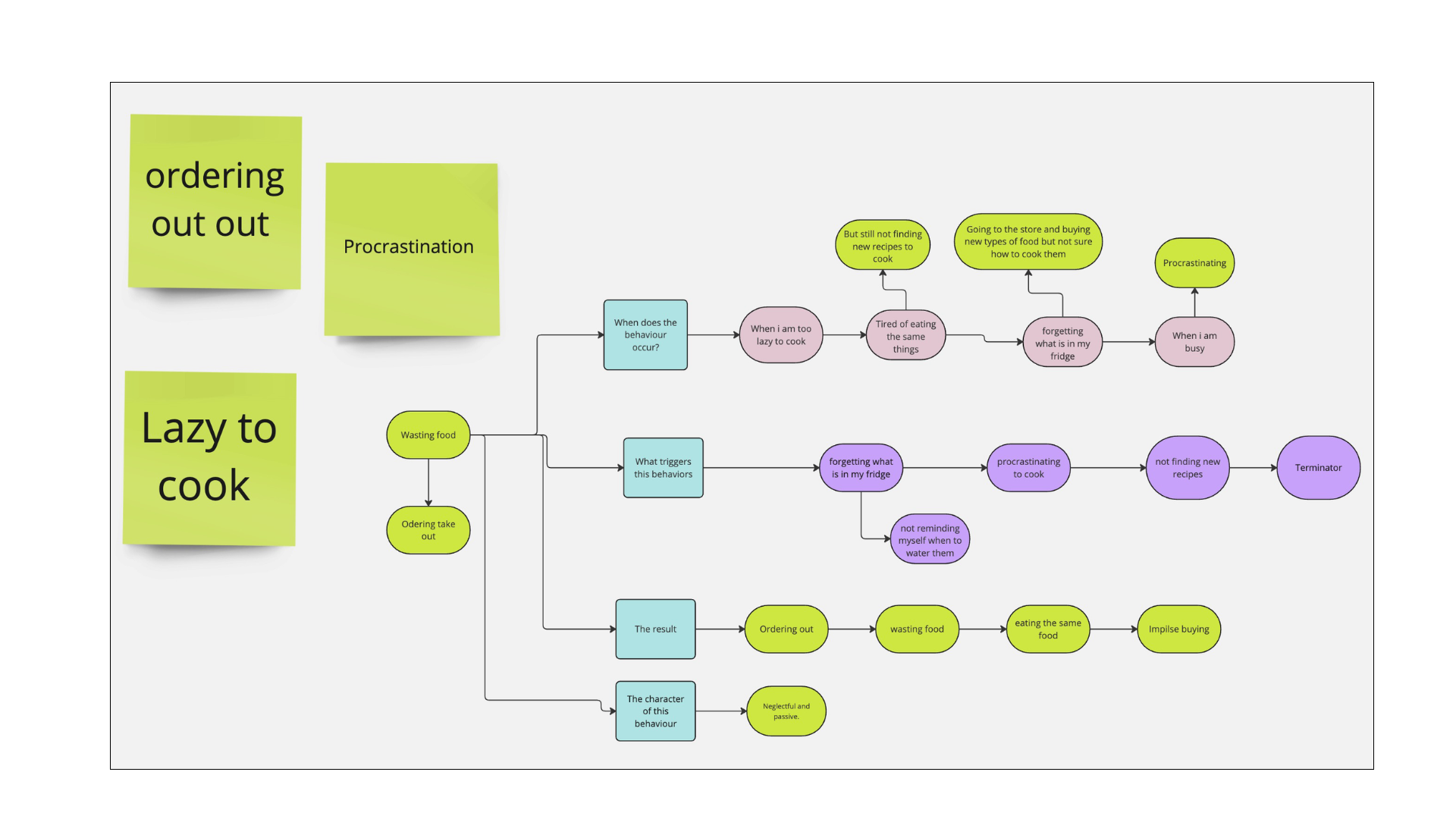
User Personas
After thinking about my habits and the ones I would like to address more, I decided to focus on my bad habit on ordering out, which encompasses my issues with food such as wasting food and procratinating to cook.
With this in mind, I can now create a user persona board combining my insights and what I have learned from others who have a similar habit. I consulted my friends and people I know to see if they shared this issue. The majority said yes and felt it was a bad habit often overlooked, especially by individuals who live alone or are young adults.
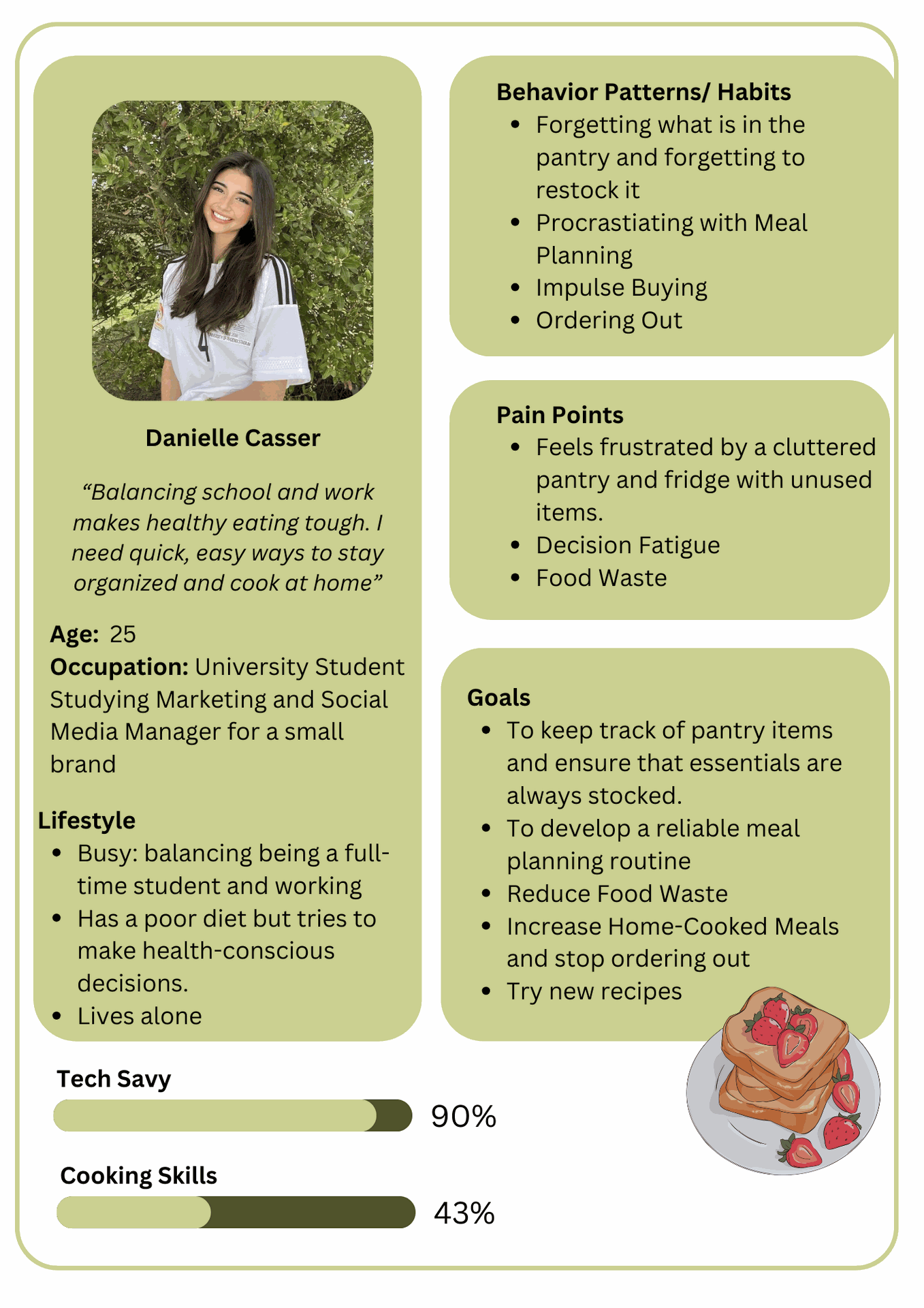
Research Synthesis
Research
I conducted in-depth research using journals and articles on food waste and the psychology behind this habit. The findings were extremely interesting and provided me with a deeper understanding of its root causes, as well as past efforts by researchers to address this issue.
The Impact of Ordering Out on Eating Habits
Research shows that frequent food delivery contributes to unhealthy eating habits, especially among students who lack cooking skills. Studies suggest that:
- Poor dietary choices often stem from reliance on food delivery due to a lack of cooking knowledge (Srivastava et al., 2021).
- Cooking education and behavioral interventions can improve diet quality (Czup, 2020).
Psychological Effects
- Ordering food provides instant gratification but can lead to overconsumption and poor portion control (Mehta et al., 2023).
- Emotional eating, triggered by stress or boredom, increases the risk of binge eating and eating disorders (Reichenberger et al., 2021).
- The rise of food delivery services is changing consumer food habits, often reinforcing unhealthy behaviors.
Encouraging cooking education and mindful eating can help promote healthier food choices.
Some key questions I asked myself included:
- What are some of the biggest hurdles or challenges that arise while trying to ‘kick the habit’?
- Lack of cooking skills
- The convenience of ordering seems easier than actually cooking
- No easy acssess to recipes
- lack of motivation
- lack of planning
2. What can be done to lessen the impact of these challenges?
- Meal planning
- easy and quick recipes
- having more insight into how to use the goods you already have in the house
- having the motivation to cook
- making staying in and cooking seem and feel more rewarding
3. How can all this be translated into the inner and virtual ‘space’ UX designers create?
By utilizing mobile technology, the app motivates users to build better habits through a personalized interface and a supportive environment. Features like streaks and progress trackers enhance motivation by rewarding progress. Additionally, a community aspect helps users connect with others facing similar challenges, making home cooking feel achievable and enjoyable.
Precedents and Visual Planning
When researching other similar apps, I was very inspired by features in some and how they laid out the application, as well as the way users would navigate through it. Apps such as calorie counters and food trackers have a slick and minimal design while also offering health and wellbeing advice, which served as inspiration for my project. Additionally, I found apps like Tasty, which allows users to post and discover recipes, and an app called Grocery Shopping List Listonic for grocery shopping, as well as Pick and Pay ASAP, which I felt aligned perfectly with my topic.
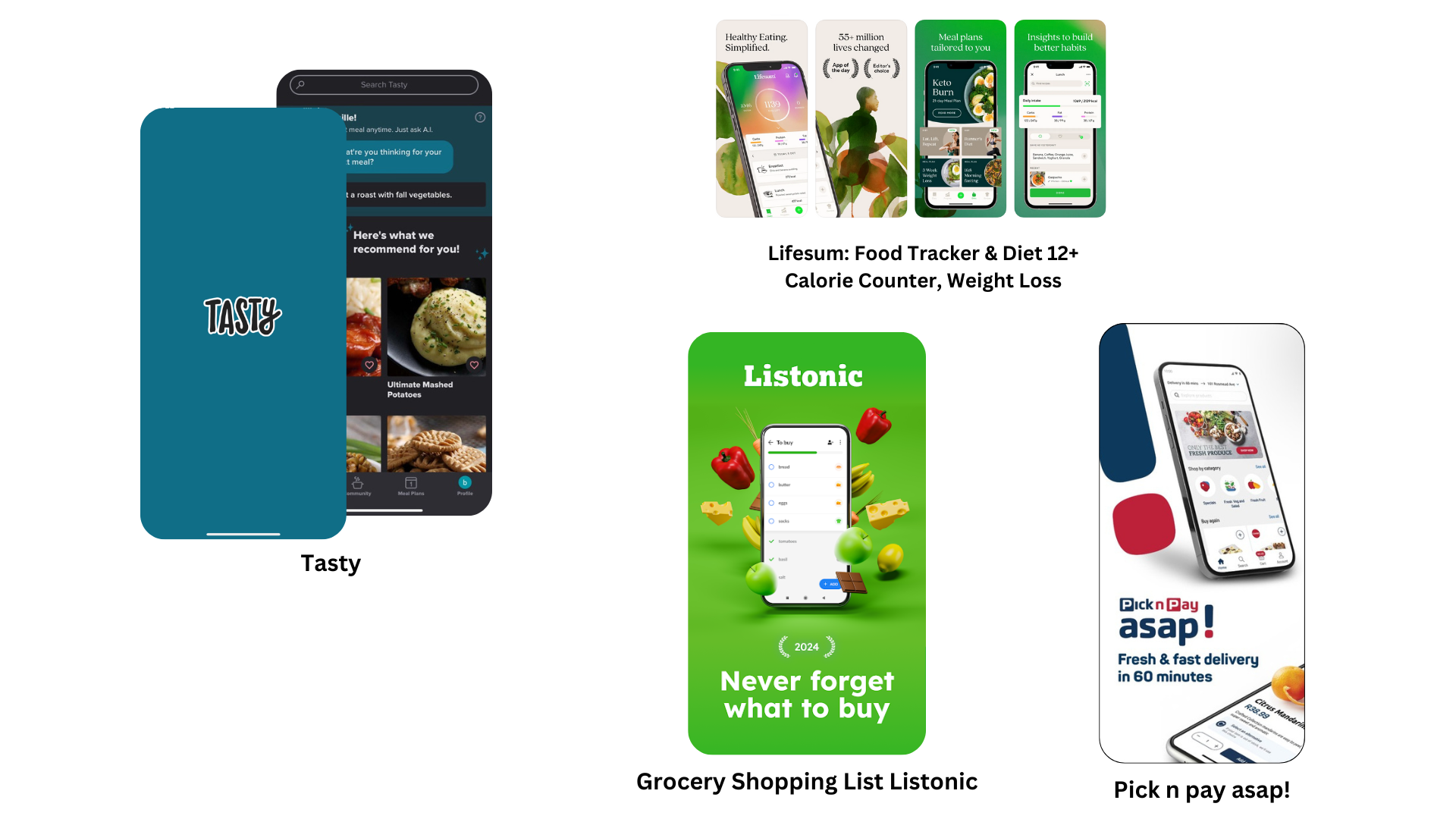
Mood Board
After researching apps related to my topic, I became inspired not only by their functionality but also by their aesthetics. I aimed to create something minimalistic, with colors that evoke positive feelings and a visually pleasing layout.
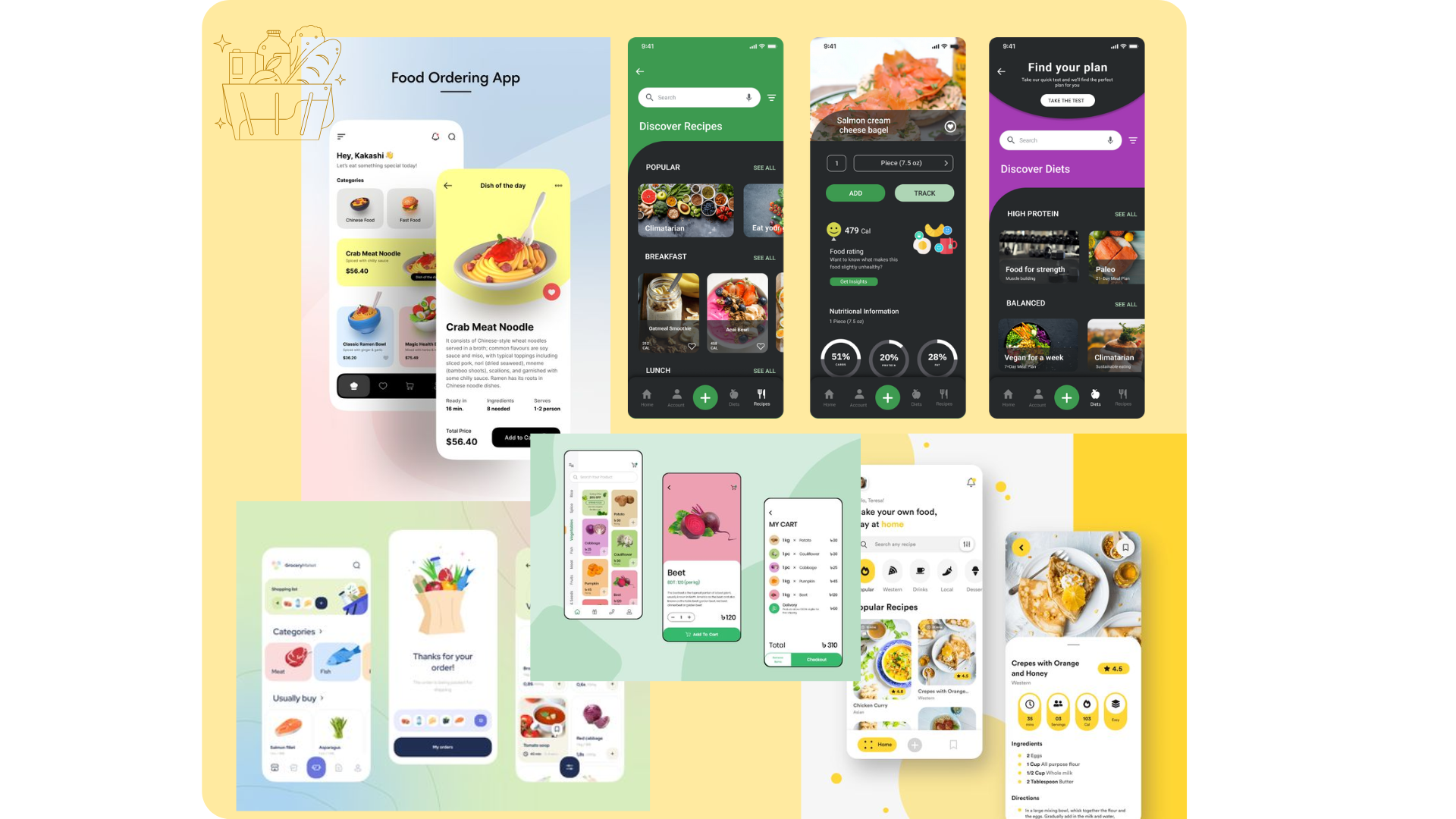
Design
Wireframes
Using the mood board and user persona, along with insights from research on relevant theories and similar food-related applications, I began creating wireframes to visually map out and plan the features I wanted to implement

Annoated Mock Ups
I then moved on to creating mockups in Figma for the Pantry app, incorporating all the research and key features that effectively addressed the problem. These mockups visually represent the app’s design, functionality, and user experience, ensuring that the solutions align with user needs and research insights.
